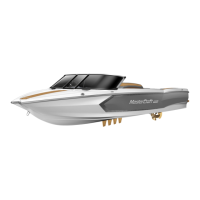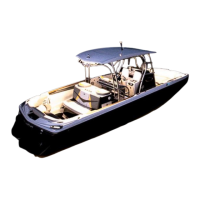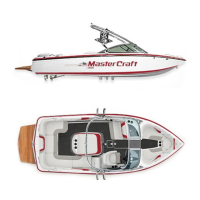Rules of the Open Water
Just as there are rules that apply when driving
a vehicle on the street, there are waterway rules
that apply when you are driving a boat. These
rules are used internationally, and they are en-
forced by the United States Coast Guard and lo-
cal agencies. You should be aware of these rules
and follow them whenever you encounter another
vessel on the water.
In various geographic locations certain rules
prevail that may be unique to the locale, but all
are basically the same as the International Rules of the Road.
The rules presented in this manual are condensed and have been provided as a convenience only.
Consult your local U.S. Coast Guard Auxiliary (USCGA), Department of Motor Vehicles (DMV) or Department of
Natural Resources (DNR) for a complete set of rules governing the waters in which you will be using your boat.
If you plan to travel–even for a short trip–you would be well-served to contact the regional USCGA, DMV or
DNR in the area where you will be boating.
Steering and Sailing Rules/Sound Signals
Any time two vessels on the water meet one another, one vessel has the right-of-way. It is called the stand-on
vessel. The vessel that does not have the right-of-way is called the give-way or burdened vessel.
These rules determine which vessel has the right of way, and accordingly, what each vessel should do.
The vessel with the right-of-way has the duty to continue its course and speed, except to avoid an immediate
collision. When you maintain your direction and speed, the other vessel will be able to determine how best to
avoid you.
The vessel that does not have the right-of-way has the duty to take positive and timely action to stay out of the
way of the stand-on vessel. Normally, the give-way vessel should not cross in front of the stand-on vessel. Slow
down or change directions briefly and pass behind the other vessel. You should always move in such a way that
the stand-on operator can see what you are doing.
The General Prudential Rule
This rule is called Rule 2 in the International Rules and says,
“In obeying and construing these rules due regard shall be had to all dangers of navigation and collision, and to any
special circumstances, which may render a departure from the above rules necessary in order to avoid immediate danger.”
Rules When Encountering Vessels
There are three main situations in which you may encounter other vessels and
you must avoid a collision. These are:
• Meeting (you are approaching another vessel head-on)
• Crossing (you are traveling across the other vessel’s path)
• Overtaking (you are passing or being passed by another vessel)
Using the adjacent image in which you are boat in the center, you should give
right-of-way to all vessels shown in the white area. In this instance, you are the give-
way vessel. Both you and the meeting vessel must alter course to avoid each other.
Meeting
If you are meeting another power vessel head-on, and you are close enough
to run the risk of collision, neither of you has the right-of-way. Both of you
should alter course to avoid an accident. You should keep the other vessel
on your port (left) side. This rule doesn’t apply if both of you can clear each
other by continuing your set course and speed.
RULES OF THE OPEN WATER
2-1

